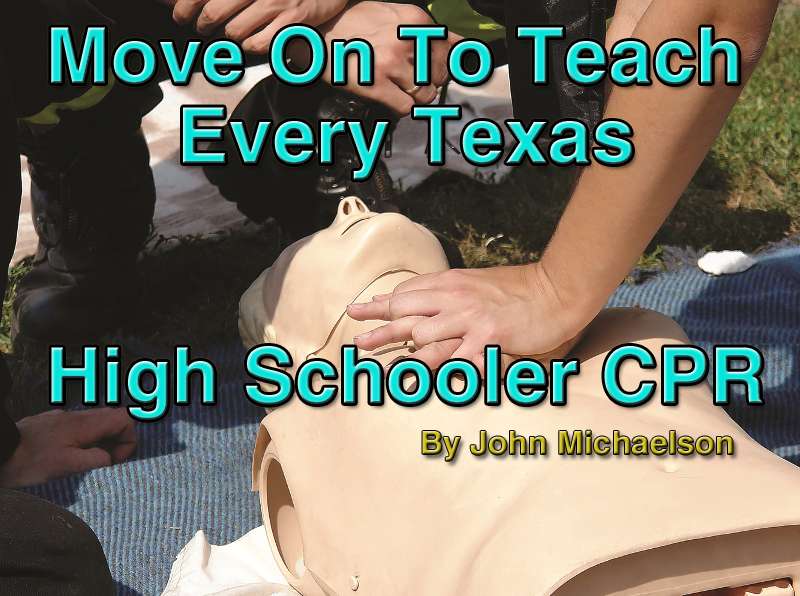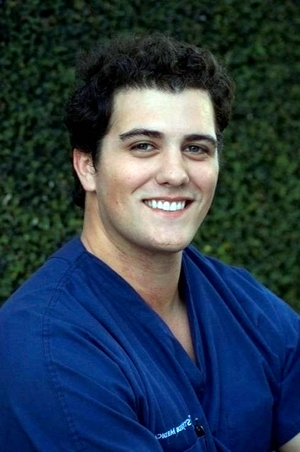
Only about 11 percent of Americans who suffer cardiac arrest outside a hospital setting survive. But with bystander CPR, their odds of survival are doubled or even tripled. HB 897 would require all students in Texas to be taught CPR prior to graduation. Courtesy of American Heart Association.
AUSTIN, Texas – A hearing was held recently at the State Capitol on a bill that has the potential to save thousands of lives, by having CPR taught to all Texas high school pupils before graduation.
Among the supporters of the legislation is Dr. Ellen Pringle of the University of Texas, who said the hands-only CPR method is easy to learn and should be one of those basic life skills.
“We learn how to change oil, we learn how to balance checkbooks, but we don’t learn one of the most vital things that there is – and that’s saving someone that’s either a friend, a family member – if something bad happens,” she asserted. “So we’re excited about it. We hope we can get the bill passed.”
Also urging lawmakers to pass the legislation is Matt Nader of Austin, who was 17 years old when he suffered cardiac arrest during a high school football game. Nader’s parents were there and immediately started CPR on their son. Nader survived, and now he’s among those who want to turn everyday people into an army of lifesavers.

Matt Nader suffered from cardiac arrest while playing a high school football game. He survived thanks to bystander CPR by his parents and is now an advocate for having CPR taught to all Texas high schoolers.
“There’s no substitute in adequate preparation for anything,” Nader declared. “People that are able to understand the situation. They’re prepared and they’re confident. And when it comes down to saving somebody’s life, that’s the most important thing.”
For those opposed or uncertain about the requirement, one concern is about adding another cost to strapped school budgets. But Pringle said it can be done with little to no cost, since certification is not needed and many emergency responders will conduct the training for free.
“Houston Independent School District has done this training in the past and we’ve gone in free of charge to help the students learn this,” she cited as an example. “It’s very simple.”
The bill under consideration would have all pupils in the state take just one 30-minute CPR class at some point between seventh grade and high school graduation. The measure is supported by nearly 80 percent of Texans, according to polling by the American Heart Association. Heart disease is the state’s leading killer.
Around 300,000 Americans suffer cardiac arrest away from the hospital every year. Those who have bystander CPR administered are twice or even three times more likely to survive.
More information is at legiscan.com.
Time To Teach Every TX High Schooler CPR?
Only about 11 percent of Americans who suffer cardiac arrest outside a hospital setting survive. But with bystander CPR, their odds of survival are doubled or even tripled. HB 897 would require all students in Texas to be taught CPR prior to graduation. Courtesy of American Heart Association.
AUSTIN, Texas – A hearing was held recently at the State Capitol on a bill that has the potential to save thousands of lives, by having CPR taught to all Texas high school pupils before graduation.
Among the supporters of the legislation is Dr. Ellen Pringle of the University of Texas, who said the hands-only CPR method is easy to learn and should be one of those basic life skills.
“We learn how to change oil, we learn how to balance checkbooks, but we don’t learn one of the most vital things that there is – and that’s saving someone that’s either a friend, a family member – if something bad happens,” she asserted. “So we’re excited about it. We hope we can get the bill passed.”
Also urging lawmakers to pass the legislation is Matt Nader of Austin, who was 17 years old when he suffered cardiac arrest during a high school football game. Nader’s parents were there and immediately started CPR on their son. Nader survived, and now he’s among those who want to turn everyday people into an army of lifesavers.
Matt Nader suffered from cardiac arrest while playing a high school football game. He survived thanks to bystander CPR by his parents and is now an advocate for having CPR taught to all Texas high schoolers.
“There’s no substitute in adequate preparation for anything,” Nader declared. “People that are able to understand the situation. They’re prepared and they’re confident. And when it comes down to saving somebody’s life, that’s the most important thing.”
For those opposed or uncertain about the requirement, one concern is about adding another cost to strapped school budgets. But Pringle said it can be done with little to no cost, since certification is not needed and many emergency responders will conduct the training for free.
“Houston Independent School District has done this training in the past and we’ve gone in free of charge to help the students learn this,” she cited as an example. “It’s very simple.”
The bill under consideration would have all pupils in the state take just one 30-minute CPR class at some point between seventh grade and high school graduation. The measure is supported by nearly 80 percent of Texans, according to polling by the American Heart Association. Heart disease is the state’s leading killer.
Around 300,000 Americans suffer cardiac arrest away from the hospital every year. Those who have bystander CPR administered are twice or even three times more likely to survive.
More information is at legiscan.com.